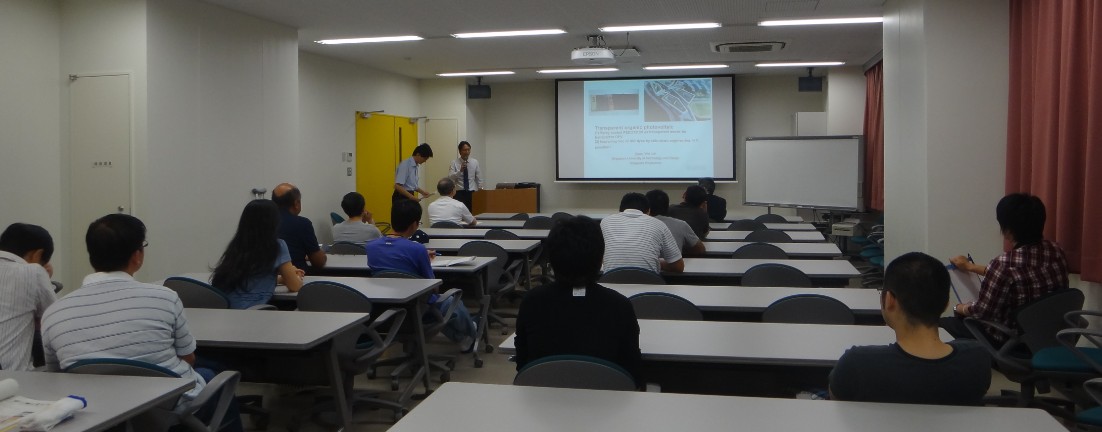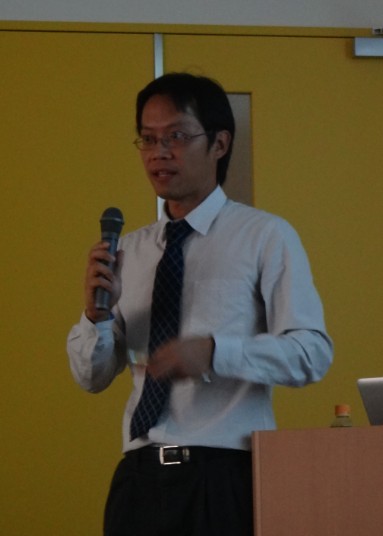The 43rd ROEL Lecture Session was held on Aug. 29th. As a guest speaker, Dr. Wei Lek KWAN from Singapore University of Technology and Design, gave us a lecture entitled "Transparent organic photovoltaic – (1) Spray coated PEDOT:PSS as transparent anode for transparent OPV, (2) Improving Voc of NIR dyes by side-chain engineering, is it possible?".
More than 30 researchers and students attended to the lecture, and it finished in success.
 Conference room during the lecture |  Dr. Wei Lek KWAN, Singapore University of Technology and Design |












